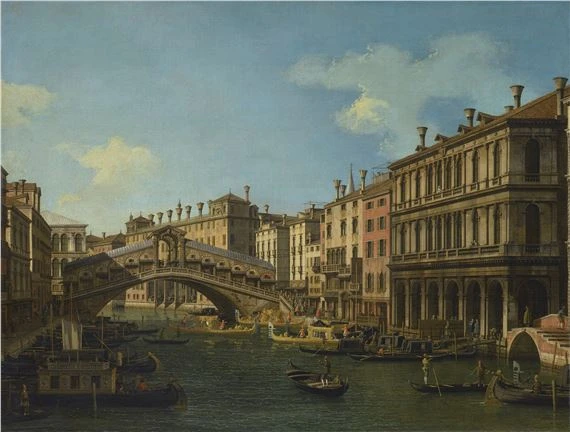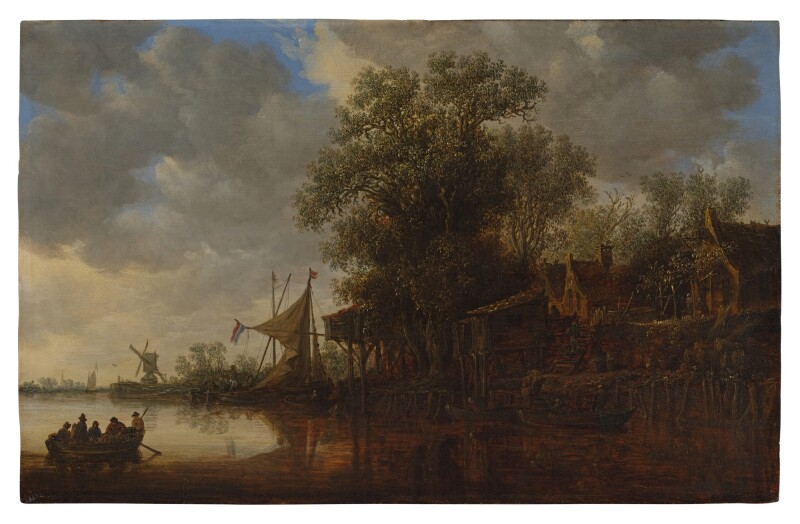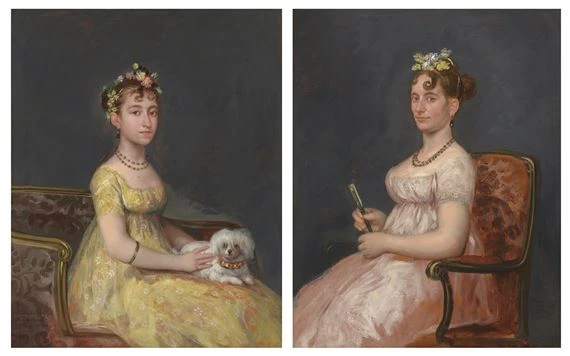
NY Old Masters Sales Sets New Tone For Category
New York’s recent Old Masters Auctions seem to have set a precedent on the state of the market moving into the new year.
The latest round of Old Master sales at Christie’s and Sotheby’s marked the most robust in recent seasons, bolstered by top-notch private collection offerings, museum interest, and fresh interest from new buyers.
Let’s break down the staggering week of sales.
How Much Was sold during the Old Master sales?

The grand total of sales across all the Old Masters auctions grossed $150 million, a high that has not been seen in years for the category.
Christie’s pulled in $62.8 million with an offering of roughly 75 works with no reserve prices, all coming front the white glove collection of J.E. Safra (accounting for $18.5 million) and the main Old Masters sale ($44.2 million).
Sotheby’s took in a hefty total of $86.6 million for a main Old Master auction that realized $28.8 million and a white glove offering of the prestigious Fisch Davidson collection that brought in $49.6 million for the ten lots exclusive in that sale. The Fisch Davidson collection was, by all means, the highest-earning individual auction of the week. Yet, another Sotheby’s single-owner auction of Dutch paintings from the Theiline Schumann collection added $8 million to the grand total for the auction house.
Both houses also held smaller related sales of Old Master drawings, which reflected lower price points and wider circles of interest.
While of course not an exact comparison, the most recent round of major sales in London back in December were only able to pull a combined $56 million, and that marked one of the best seasons in years. From that point of view, this $150 million season in New York has set a new tone.
What Has Changed About the Old Masters Sales?
Typically overshadowed by the frenzied activity around Contemporary Art, the Old Masters category has undergone some changes in order to excite collectors.
Some of the new attempts to reinvent the categories are developing new art historical narratives, with many highlighting female artists.
Another experiment taken was extensive presale touring of artworks, extending the reach for the artworks to be seen by the public as well as possible buyers.
In addition to the marketing tactics on part of the auction houses, there were also more available lots on the market during the New York week than there had been for many years, creating a larger sense of depth in the market.
Furthermore, a calendar move by Christie’s seems to have created a greater cohesion and momentum. Christie’s previously held their sales in April, which had proven to be unfavorable due to lower sale totals and buy-through rates. The move of the sales to January alongside Sotheby’s proved to be a risk well taken.
The No Reserve Strategy of the Old Master Sales
Several of the sales practiced the “no reserve strategy,” which simply means that none of the artworks in these sales held a reserve price. A reserve price is the minimum amount a seller is willing to sell the artwork for — if the reserve price is not met, then the work will not be sold.
Christie’s Safra Collection sale was an example of the power of the no-reserve strategy, given that all works were sold and maintained competitive bidding.
By not setting a threshold, buyers may have been more likely to bid on the artworks without the pressure of needing to overreach a budget. Also, the lack of reserve can confirm to the auction house that every piece could be sold without setting price limitations.
Which Artists Saw Records During the Old Masters Sales?

New auction records were set during the Old Masters sales for Francisco Goya, Peter Paul Rubens and Jean-Baptiste Oudry, among others.
The top lot for the Christie’s main auction was a double portrait by Francisco Goya titled Portrait of Doña Maria Vicenta Barruso Valdés, seated on a sofa with a lap-dog; and Portrait of her mother Doña Lronara Antonia Valdés de Barruso, seated on chair holding a fan.
The double portrait sold at the mid-estimated price of $16.4 million, more than doubling Goya’s previous auction record of $7.7 million.
Peter Paul Rubens achieved a new auction record during the Sotheby’s Fisch Davidson Collection — widely considered one of the most important collections of Baroque art to ever appear on the market.
Ruben’s painting Salome presented with the head of Saint John the Baptist sold for just under $27 million, establishing a new record.
Museums Play a Part in the Old Masters Sales
A number of museums were active buyers of some of the artworks in the sales across both houses. This kind of institutional interest is another contributing factor to the success of the Old Master category thus far.
For example, the Cleveland Museum of Art walked away with an Anna Dorothea Therbusch painting titled Portrait of a scientist seated at a desk by candlelight, for $441,000. The Ohio-based museum also bought the bronze group of Apollo Flaying Marsys by Giovanni Battista Foggini for $882,000 from one of the smaller day sales.
Another museum buy was from the Stockholm Nationalmuseum, who bought a painting of a young man asleep before an open book by an artist active in the circle of Rembrandt van Rijn for $945,000.
Final Thoughts
It’s predicted that Old Masters are likely to continue to appeal to new and seasoned buyers alike. With the established track record of the work of the Old Masters, many collectors find the confidence to put some of their assets into work they enjoy, with the assurance that if they wish to sell at some time in the future, there is a market to do so.
One does not have to wait for an artist to be discovered and acclaimed if the artist’s work has been hanging on museum walls for centuries… or decades.
Invest in Masterpieces With Masterworks
If Old Masters is not your preferred category but you still see the value of art as an asset class and have a love for the modern and contemporary categories, then there may be a platform for you.
Masterworks is the first art investment platform that gives everyday people the opportunity to invest through fractional ownership of blue chip contemporary art.
With prices starting at $20 per share, investing in your favorite artworks has never been easier.
Here’s a quick overview of how the platform works:
- The research team identifies which artist markets have potential.
- The acquisitions team then locates a piece they believe could appreciate in value and purchases it.
- Masterworks files an offering with the Securities and Exchange Commission (SEC) to securitize the artwork.
- After you’ve invested in shares, all you need to do is wait. Masterworks can hold the painting for 3–10 years. If the piece is sold at a profit, you’ll receive pro rata returns after fees are subtracted.
- Alternatively, you can opt to sell your shares on the secondary market.
Get started by completing Masterworks’ membership application.
See important Reg A disclosures: Masterworks.com/cd